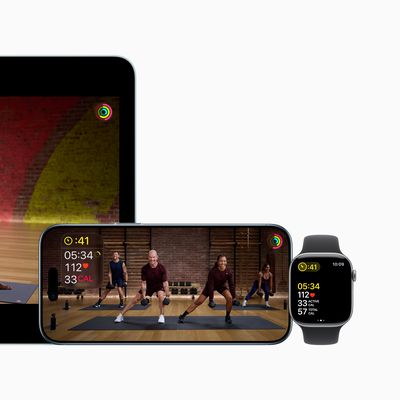Intel Working to Boost Thunderbolt Speeds with Move to PCI-Express 3.0
IDG News reports that Intel is currently working on shifting its Thunderbolt standard to the PCI-Express 3.0 protocol, a move that could allow the company to double data transfer speeds over existing implementations based on PCIe 2.0.
Intel in the future will support the PCI-Express 3.0 protocol to shuttle data faster between host devices and peripherals, an Intel spokesman said in an email. Computers with Thunderbolt interconnect currently communicate with external devices using the older PCI-Express 2.0 technology.
The company will incorporate PCI-Express 3.0 in Thunderbolt, but could not provide a time frame for when it will be accomplished.
PCIe 3.0 offers a 60% boost in raw data transfer speed compared to PCIe 2.0, going from 5 gigatransfers per second (GT/s) to 8 GT/s. But significantly lower overheard requirements in PCIe 3.0 mean that the effective bandwidth can be doubled by moving to the latest standard.

PCIe 3.0 is already making an appearance in Intel's chip products, including the just-launched Xeon E5 chips that could power updated Mac Pro models, as well as the forthcoming Ivy Bridge chips for notebooks and desktops. It will, however, take some time to move Thunderbolt over to PCIe 3.0 and get peripheral manufacturers onboard with the standard.
Apple and Intel debuted Thunderbolt technology with a MacBook Pro update in February 2011, and the standard has rolled out to Apple's entire Mac product line with the exception of the Mac Pro, which has not been updated since mid-2010.
Popular Stories
Apple is not expected to release a standard iPhone 18 model this year, according to a growing number of reports that suggest the company is planning a significant change to its long-standing annual iPhone launch cycle.
Despite the immense success of the iPhone 17 in 2025, the iPhone 18 is not expected to arrive until the spring of 2027, leaving the iPhone 17 in the lineup as the latest...
Language learning app Duolingo has apparently been using the iPhone's Live Activity feature to display ads on the Lock Screen and the Dynamic Island, which violates Apple's design guidelines.
According to multiple reports on Reddit, the Duolingo app has been displaying an ad for a "Super offer," which is Duolingo's paid subscription option.
Apple's guidelines for Live Activity state that...
The company behind the BlackBerry-like Clicks Keyboard accessory for the iPhone today unveiled a new Android 16 smartphone called the Clicks Communicator.
The purpose-built device is designed to be used as a second phone alongside your iPhone, with the intended focus being communication over content consumption. It runs a custom Android launcher that offers a curated selection of messaging...
Apple plans to introduce a 12.9-inch MacBook in spring 2026, according to TrendForce.
In a press release this week, the Taiwanese research firm said this MacBook will be aimed at the entry-level to mid-range market, with "competitive pricing."
TrendForce did not share any further details about this MacBook, but the information that it shared lines up with several rumors about a more...
Apple is planning to release a low-cost MacBook in 2026, which will apparently compete with more affordable Chromebooks and Windows PCs. Apple's most affordable Mac right now is the $999 MacBook Air, and the upcoming low-cost MacBook is expected to be cheaper. Here's what we know about the low-cost MacBook so far.
Size
Rumors suggest the low-cost MacBook will have a display that's around 13 ...
Apple today announced a number of updates to Apple Fitness+ and activity with the Apple Watch.
The key announcements include:
New Year limited-edition award: Users can win the award by closing all three Activity Rings for seven days in a row in January.
"Quit Quitting" Strava challenge: Available in Strava throughout January, users who log 12 workouts anytime in the month will win an ...
Apple hasn't updated the Mac Pro since 2023, and according to recent rumors, there's no update coming in the near future. In fact, Apple might be finished with the Mac Pro.
Bloomberg recently said that the Mac Pro is "on the back burner" and has been "largely written off" by Apple. Apple apparently views the more compact Mac Studio as the ideal high-end pro-level desktop, and it has almost...























